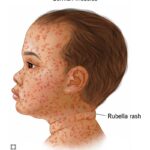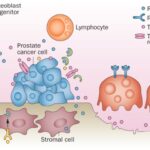Seizures following cranial trauma or neurosurgical interventions represent a serious neurological complication with implications for recovery, long-term outcomes, and patient safety. These seizures can be classified as:
- Immediate seizures: Occurring within 24 hours of the incident or surgery
- Early seizures: Within 7 days post-injury or operation
- Late seizures: Beyond 7 days, often evolving into post-traumatic epilepsy (PTE)
Prevention and management demand a structured approach integrating clinical assessment, pharmacologic prophylaxis, and individualized risk stratification.

Risk Factors for Seizures After Cranial Trauma or Neurosurgery
Understanding who is most at risk allows for targeted prophylactic strategies. Common risk factors include:
- Severe traumatic brain injury (TBI) (Glasgow Coma Scale ≤8)
- Intracerebral hematoma or contusion
- Depressed skull fractures, particularly with dural penetration
- Penetrating head injuries
- Subdural or epidural hematomas
- Frontal or temporal lobe involvement
- Craniotomy with cortical manipulation
- Pre-existing epilepsy or seizure disorders
- Alcoholism or metabolic instability
Identifying these factors enables clinicians to initiate timely interventions.
Role of Antiepileptic Drugs (AEDs) in Seizure Prevention
1. Prophylactic Use in Traumatic Brain Injury
Randomized trials support the short-term use of antiepileptic drugs (AEDs), particularly phenytoin or levetiracetam, to prevent early post-traumatic seizures (PTS).
- Phenytoin: Historically the most used AED, effective in reducing early seizures but not late epilepsy.
- Levetiracetam: Comparable efficacy with better tolerability and fewer drug interactions.
Dosing Protocol:
- Phenytoin loading dose: 15–20 mg/kg IV, followed by 100 mg IV/PO every 8 hours
- Levetiracetam loading dose: 1,000–3,000 mg IV, then 500–1,000 mg twice daily
Duration: Typically 7 days post-injury or post-surgery, unless seizures occur, in which case long-term management is warranted.
2. Prophylaxis in Neurosurgical Procedures
Prophylactic AEDs are commonly administered for craniotomies involving cortical exposure, such as:
- Tumor resection near motor or language cortex
- Aneurysm clipping with cerebral manipulation
- Epileptogenic foci surgery
While long-term seizure prevention remains inconclusive, short-term AED use reduces immediate postoperative seizure incidence.
Monitoring and Therapeutic Considerations
Therapeutic Drug Monitoring (TDM)
For AEDs like phenytoin, serum levels must be monitored to:
- Ensure therapeutic efficacy
- Avoid neurotoxicity
- Adjust for altered pharmacokinetics post-trauma
Target serum levels:
- Phenytoin: 10–20 µg/mL
- Free phenytoin: 1–2 µg/mL (especially relevant in hypoalbuminemia)
Adverse Effects and Drug Selection
- Phenytoin: Risk of rash, gingival hyperplasia, hepatotoxicity, and cardiac arrhythmias (with IV use)
- Levetiracetam: Generally well tolerated; can cause mood alterations or irritability
Levetiracetam is often preferred due to ease of use, lack of monitoring requirements, and better safety profile, especially in polytrauma patients.
Imaging and EEG for Risk Stratification
CT/MRI Imaging
- Hematoma, edema, or cortical disruption on imaging increases seizure risk.
- Repeat imaging guides AED continuation decisions in deteriorating patients.
Electroencephalography (EEG)
- Routine or continuous EEG is essential in patients with altered consciousness or suspected subclinical seizures.
- High epileptiform activity may warrant prophylactic AED extension.
Long-Term Risk of Post-Traumatic Epilepsy (PTE)
Although early AED use prevents acute seizures, it does not reduce long-term PTE risk. Predictors of late epilepsy include:
- Persistent cortical damage
- Severe initial insult
- Early seizure occurrence
- Repeated neurosurgical interventions
Long-term AED therapy is only initiated after confirmed unprovoked seizures or high epileptiform burden on EEG.
Postoperative Patient Counseling and Education
Patients recovering from brain injury or surgery must be informed about:
- Seizure warning signs (aura, confusion, motor symptoms)
- Importance of medication adherence
- Restrictions on driving, operating machinery, and swimming
- Risk of recurrent seizures and when to seek emergency care
Educating families and caregivers also enhances post-discharge safety.
Special Considerations
Pediatric Patients
- Higher susceptibility to seizures
- Age-specific AED dosing and neurodevelopmental monitoring required
Geriatric Patients
- Increased sensitivity to AED side effects
- Polypharmacy considerations and comorbidity evaluation
Summary and Recommendations
Effective prevention of seizures following cranial trauma or surgery requires:
- Early identification of high-risk individuals
- Short-term AED prophylaxis with phenytoin or levetiracetam for 7 days
- Monitoring of drug levels and side effects
- EEG and imaging to refine risk assessment
- Patient-specific decision-making based on injury type, surgical complexity, and clinical evolution
By implementing these strategies, we can significantly reduce acute seizure burden, optimize patient recovery, and enhance neurological outcomes in both trauma and neurosurgical contexts.
Frequently Asked Questions (FAQs)
Should all head injury patients receive seizure prophylaxis?
No, only those with moderate to severe TBI, penetrating injuries, or cortical involvement warrant prophylaxis.
How long should AEDs be continued after head trauma?
Typically for 7 days, unless a seizure occurs or prolonged risk factors persist.
What is the best AED for prophylaxis post-neurosurgery?
Levetiracetam is preferred due to fewer interactions and easier administration, though phenytoin remains acceptable.
Can seizures after surgery indicate epilepsy?
A single early seizure does not confirm epilepsy. Post-traumatic epilepsy is diagnosed if unprovoked seizures occur >7 days after the insult.
Is EEG necessary for all patients post-head trauma?
Not always, but highly recommended for altered mental status, suspicious movements, or non-convulsive seizures.

